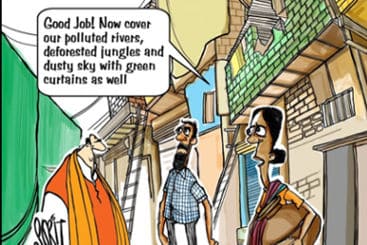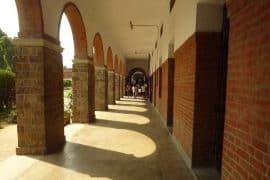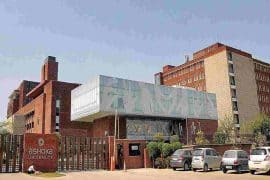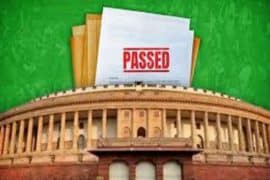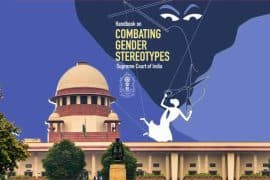A reflective piece on the state’s attempts at defining aesthetic spaces within Delhi and ‘invisibilizing’ citizenry.
Through the years, the capital city of Delhi has been at the heart of romanticization and overt aestheticization. From Purani Dilli ke Seekh Kebabs to sunsets at India Gate, the city has been branded as an illusion of dreams, love, and utopia.
However, the reality is pretty different. Over centuries, in the same gullies of old Chandni Chowk, live ghettoised communities of immigrant labourers and religious minorities who lack proper living or working conditions. The same Delhi that is depicted by the beautiful roads of Jor Bagh also holds infrastructure so poor in the northern parts that shelters get flooded within a week of rainfall.
Hitherto, the supposed aesthetic face of Delhi has always existed in popular culture and conventional media, but the recent G20 summit revealed the government’s inclination towards maintaining those spaces as well. The G20 summit, with reputed foreign delegates and heads of state like Joe Biden, Rishi Sunak, and Olaf Scholz arriving in the capital city of Delhi, was a matter of huge pride for the country, the ruling government, and especially Prime Minister Modi’s image in the global arena.
And hereby, for the sake of maintaining and polishing this supposed glamorous image, sacrifices were made. And these sacrifices always came down to the same set of voiceless and suppressed sections of the Indian population.
Under the ironic guise of ‘One Earth, One Family’, the Modi government deliberately placed green curtains over the poor slums and local businesses of Delhi, apparently too ashamed of its ignorance towards inclusive social development through the years.
Hiding the so-called ‘ugly parts’ of the capital city implies the state defining aesthetic spaces for the citizenry on the basis of social and economic status. The state decides which aspects of the Indian diaspora are suitable for the eyes of Joe Biden and Rishi Sunak. This points to the idea that if you are living in unhygienic quarters and are unable to fend for three meals a day with malnourished children running around your streets, then alas! Your existence is a bane to ‘Bharat’ and must be hidden.
While trying to boost its own image on the global stage, the Modi government fails to imagine how the green curtains have, in fact, done the opposite. It depicts the Indian government as one that is ashamed of the real issues plaguing its populace and is naïve enough to go ahead and hide them rather than working to resolve them. While the Prime Minister boasts about economic prosperity on international television, the same government goes ahead and puts a veil on the other side of the coin—extreme inequality.
Newspapers, broadcast channels, and Instagram reels have bombarded you with how Delhi has received a ‘glow-up’ for the G20 summit and the government spending nearly 4000 crores for it. However, the question can always be raised: Why didn’t the government spend this sum on slum development rather than polishing the already-tidy streets of South Delhi? Was such a huge investment for the G20 necessary when it didn’t bring forth the same in return?
Probably, the answer to all these issues, according to the Modi government, is ‘invisibilizing’ the existence of such people and suppressing their voices. But is this how it is going to be? The solution to all of India’s woes, from caste oppression to extreme poverty? Are green curtains, rejecting press conferences, and shooshing down social strife across the country from reaching international ears now the answer?
The most heartbreaking part is the changing political climate amidst the Indian diaspora. While the rich and privileged of the city go out on car rides, enjoying the G20 decoration of Delhi under moonlight, the have-nots are losing the right to ‘visibilize’ their meagre existence and, in turn, their real issues. The lashing out of the Modi government against anybody that stands to tarnish its image has produced an apolitical diaspora—either too unbothered and ignorant or too scared to speak.
And hence, the green curtains of Delhi have gone unnoticed without much uproar in mainstream media and among the local masses. The scary part, however, is that if the state runs wild, defining its standards of governmentality this way without proper scrutiny, the systems of democracy will fail, as they already are.
The tragedy of the romanticization of the capital city of Delhi has been persistent. History has spoken more about the might of the walls of Red Fort than the plights of the looted locals at ‘Shahjahanabad’. Even today, we are talking about the ‘economic and cultural power’ of ‘Bharat’ and not the misery of millions whose mere existence the Modi government is ashamed to show to the world.
Even along with the romanticization, one thing has remained constant over the years: the sufferers of this supposedly mighty, aesthetized city, that is, Delhi. Perhaps you too, like the government, will content your heart with green curtains and turn a blind eye towards what lies beyond them. As the state probably said to themselves at some point, “What happens in Delhi stays within Delhi, after all.”
Read Also: Women in Politics, or the Lack Thereof
Featured Image Credits: downtoearth.org

